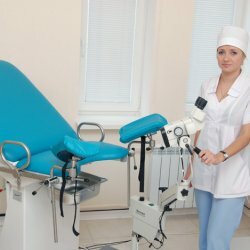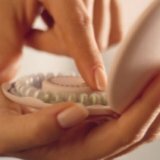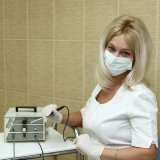Gynecological diseases and their treatment with leeches

For the treatment of gynecological diseases, leading scientists around the world are developing and introducing a huge number of medications. In most cases, their use is not justified, because practically every patient has some side effects. After the cure of a disease, another woman appears.
Often, female genital diseases develop against other diseases - chronic gastritis, thyroid dysfunction, hepatopathy, neuroses that require treatment. The use of leeches for the treatment of gynecological diseases is more justified, because hirudotherapy in comparison with drug treatment has a complex effect on the body and almost never causes side effects.
Indications for the treatment of gynecological diseases by leeches :
- inflammatory processes of the organs of the scarlet basin: endo-, paraiperimetritis, salpingo-oophoritis;
- endometriosis, adenomyosis;
- ovarian cysts;
- uterine fibroids( except for submucous site localization);
- menopause syndrome;
- varicose veins of the small pelvis;
- ovarian dysfunction, infertility;
- amenorrhea;
- adhesive processes;
- postoperative period;
- algodismenorrhea;
- habitual miscarriage.
Chronic inflammatory diseases of the uterus and appendages
These diseases include inflammatory diseases, which are accompanied by pulling pains in the lower abdomen, enlarged appendages( this is indicated by manual examination), menstrual irregularity, painful appendages. These diseases develop against a backdrop of stagnant phenomena in the pelvic organs.
Treatment of chronic inflammatory diseases of the uterus and appendages with the help of leeches
The use of leeches with such diseases gives a positive effect. Leeches help in the early stages of diseases of the appendages, when the inflammation itself has not manifested itself. Three or four procedures will help to remove interstitial edema, cope with stagnation of blood in the small pelvis, improve the blood supply to the uterus.
The procedure takes three to four leeches. Treatment is carried out every day during acute and twice a week with a chronic process or after relief of pain. The full course of treatment will be eight to ten sessions.
Endometriosis
Endometriosis is a pathological process characterized by benign tissue growth outside the uterus. This tissue in its functional and morphological properties is similar to the endometrium - internal, tearing off the mucous membrane of the uterus during menstruation. The incidence of endometriosis among women of reproductive age ranges from seven to fifty percent. The disease is detected in more than fifty percent of patients with infertility during laparoscopy.
There are many theories of the emergence of endometriosis, but none of them fully able to disclose the causes of the mechanisms of the development of this disease.
Today, certain importance is attached to genetic predisposition to the disease, implantation theory and the theory of hormonal development of endometriosis. Implantation theory explains the origin of the disease by the violation in the female body of the content and ratio of gonadotropic and steroid hormones, which is confirmed by certain changes in the foci of endometriosis during the menstrual cycle and the reverse development of the disease in postmenopause and during pregnancy.
According to the implant theory, the rejected endometrial particles are implanted on the peritoneum, tubes, ovaries, resulting in endometriosis. In the development of these processes, the most important are the pathological changes in the neuroendocrine system caused by stress, malnutrition, impaired thyroid function of internal secretion, and diseases of the genital organs.
Depending on the location, endometriosis is divided into genital and extragenital. Genital endometriosis is internal( the body of the uterus) and external( cervix, vagina, ovaries, fallopian tubes).
Externally endometriosis looks like a round, irregular or oval shape merging with other tissues or of individual small foci, in cavities of which a thick dark or glassy liquid is contained.
Symptoms of endometriosis :
- pains that appear or increase dramatically during menstruation. If the disease lasts for a long time, the pain may be permanent. This is explained by changes in the mechanisms of perception of pain sensitivity after endometrial germination in uncharacteristic places, disruption of the work of the unequal system, pituitary gland and adrenal glands, increased production of prostaglandins;
- growth of the affected organ( ovaries, uterus) or extragenital foci before and during menstruation;
- violation of menstrual function, which is expressed by pain during menstruation, prolongation of the period of menstruation, heavy menstrual flow, the appearance of smearing excretions both before and after menstruation;
- infertility. The data of some physicians show that the frequency of this violation is almost fifty percent. Causes of infertility in this case are different: violation of ovulation, adhesive processes in the small pelvis, inferiority of the endometrium in connection with the short menstrual cycle.
Certain role in infertility, which is associated with endometriosis, is played by prostaglandins.
Often patients complain of headaches and dizziness, painful sensations during intercourse. Infiltrate, which is typical for endometriosis, often causes the germination of the endometrium into neighboring organs, which leads to the defeat of the intestine and urinary tract and is accompanied by frequent urge to urinate or stool, bloating, constipation, etc. Sometimes endometriosis is accompanied by other diseases of female genital organs( inflammatory diseases, myoma), as well as anemia.
The diagnosis is based on the analysis of clinical data and special methods of examination - gynecological examination, ultrasound, hysteroscopy, laparoscopy, hysterosalpingography. Remember that after any intra-uterine interventions( surgical delivery, abortion, curettage of the uterine cavity), the risk of this disease increases significantly. That is why it is important to regularly observe a gynecologist for prevention, timely detection and treatment of enometriosis, as well as associated complications.
Treatment of endometriosis with leeches
There are medicinal and surgical methods for the treatment of endometriosis, as well as several methods of traditional therapy. In addition to them, having consulted with a doctor in advance, you can resort to methods of hirudotherapy.
Hirudotherapy, in comparison with the medicamental method of treatment, has some advantages, as it has a complex effect on the female body. An anesthetic, anti-inflammatory, immunomodulating effect of leech saliva is noted. The disappearance of uterine fibroids after several sessions of hirudotherapy can be related to the normalization of blood flow in the areas of the ovaries and the uterus, as a result of which the hormonal status is normalized with the elimination of venous congestion in the uterus. In the treatment of endometriosis, as in the treatment of other benign formations of the uterus and appendages, great importance is given to the intravaginal landing of leeches. It is important in time to seek help from an experienced gynecologist.
Adhesive process
Due to past inflammatory diseases of the appendages or after abortion in the pelvic organs, an adhesion process may develop, which often leads to infertility.
Treatment of adhesions with the help of leeches
Hirudotherapy is recommended to use when the first pregnancy in a woman has ended unsuccessfully. If the adhesion process has already begun, it can be stopped with the help of leeches. The treatment is quite long, it should be supplemented with the introduction of foods with a high iron content in the diet. The procedure takes four or seven leeches. Sessions are held after one or two days, with interruptions of two weeks. Conduct three courses on fifteen procedures.
Stay healthy!



